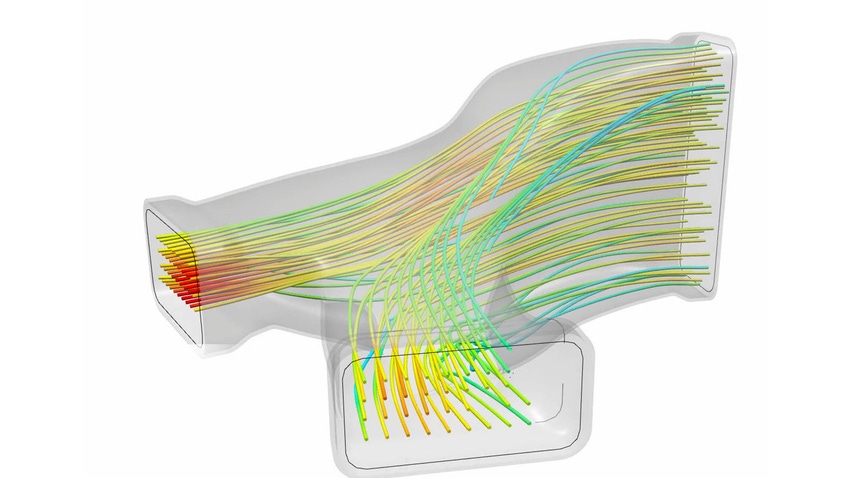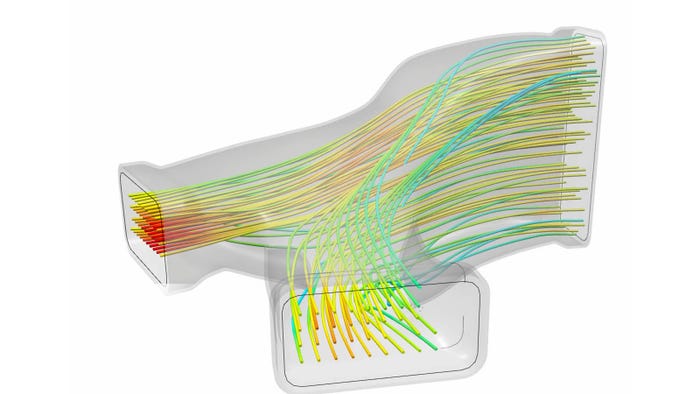Blending Generative Design with Fluid-Flow Analysis
Dassault Systèmes has integrated apps into the 3DEXPERIENCE platform to blend fluid-flow analysis with product design optimization.
May 20, 2020

While generative design technology has been known to provide designers and engineers with new capabilities to solve complex engineering challenges, traditional workflows often result in siloed tool sets and disjointed communication processes as the design team passes of its work to analysts.
|
Flow-Driven Generative Design allows users to conduct fluid flow analysis during the generative design process. (Image source: Dassault Systèmes) |
There are multiple considerations when creating a product. Is it the optimum shape, and does it allow sufficient fluid flow? Light-weighting may be one consideration. Another might be creating a fluid flow without resistance. “I would associate the goal of light-weighting with generative design as a whole. I want to create a part that is lighter and so more efficient,” Colin Swearingen, a generative design expert at Dassault Systèmes, told Design News. “With fluid, the goal would be to maximize the flow, eliminating flow resistance.”
Blending Discipline Silos
In the past these two goals would be conducted by separate teams, thus creating two silos. To address this challenge, Dassault Systèmes has introduced Flow-Driven Generative Design, a workflow consisting of a set of apps integrated within the 3DEXPERIENCE platform designed to streamline the process and speed the design and analysis process..
In blending the fluid-flow analysis with generative design, Dassault is addressing two customer audiences. “Generative design is for designers, but analysts are still part of our target audience,” said Swearingen. “By the time the design gets to the analyst, it’s 90% there. By giving the analyst more information, you can get the results from the analyst tackled earlier in in the design phase.”
The Flow-Driven Generative Design Workflow Includes
Streamlined traditional workflow that makes flow optimization capabilities more accessible to mainstream engineers. Thus, they can apply it earlier and systematically throughout the process.
Leveraged workflow assistants to guide engineers through the process of specifying input sets and boundary conditions. This will automatically optimize the output to meet the fluid flow requirements from a single unified tool.
Analysts are provided with higher-quality answers earlier in the design process. This allows them to focus on the crucial aspects of their jobs rather than taking up time with the back-and-forth with designers.
Swearingen noted that the decision to blend generative design with fluid flow analysis was an effort to solve an issue that slowed down the design process. “This is absolutely solving a problem that we were seeing from many of our customers,” said Swearingen. “We were aware of that need, so we’ve developed Flow-Driven Generative Design to address the problem.”
RELATED ARTICLES:
Rob Spiegel has covered automation and control for 19 years, 17 of them for Design News. Other topics he has covered include supply chain technology, alternative energy, and cyber security. For 10 years, he was owner and publisher of the food magazine Chile Pepper.
About the Author(s)
You May Also Like






